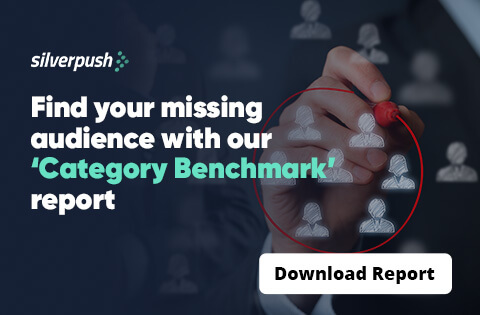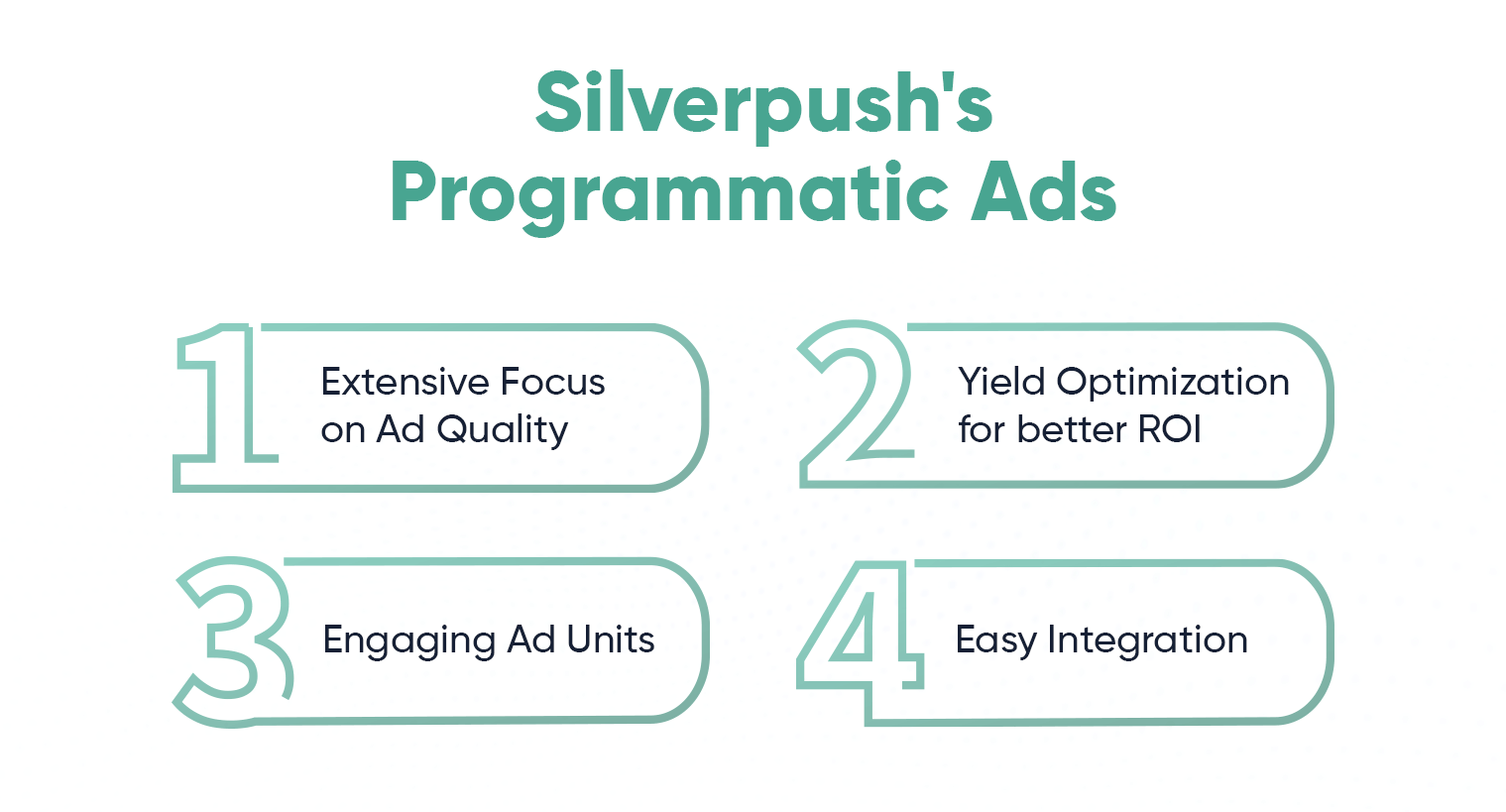Types of Programmatic Advertising & Examples of Best Campaigns | 21 Nov, 2022
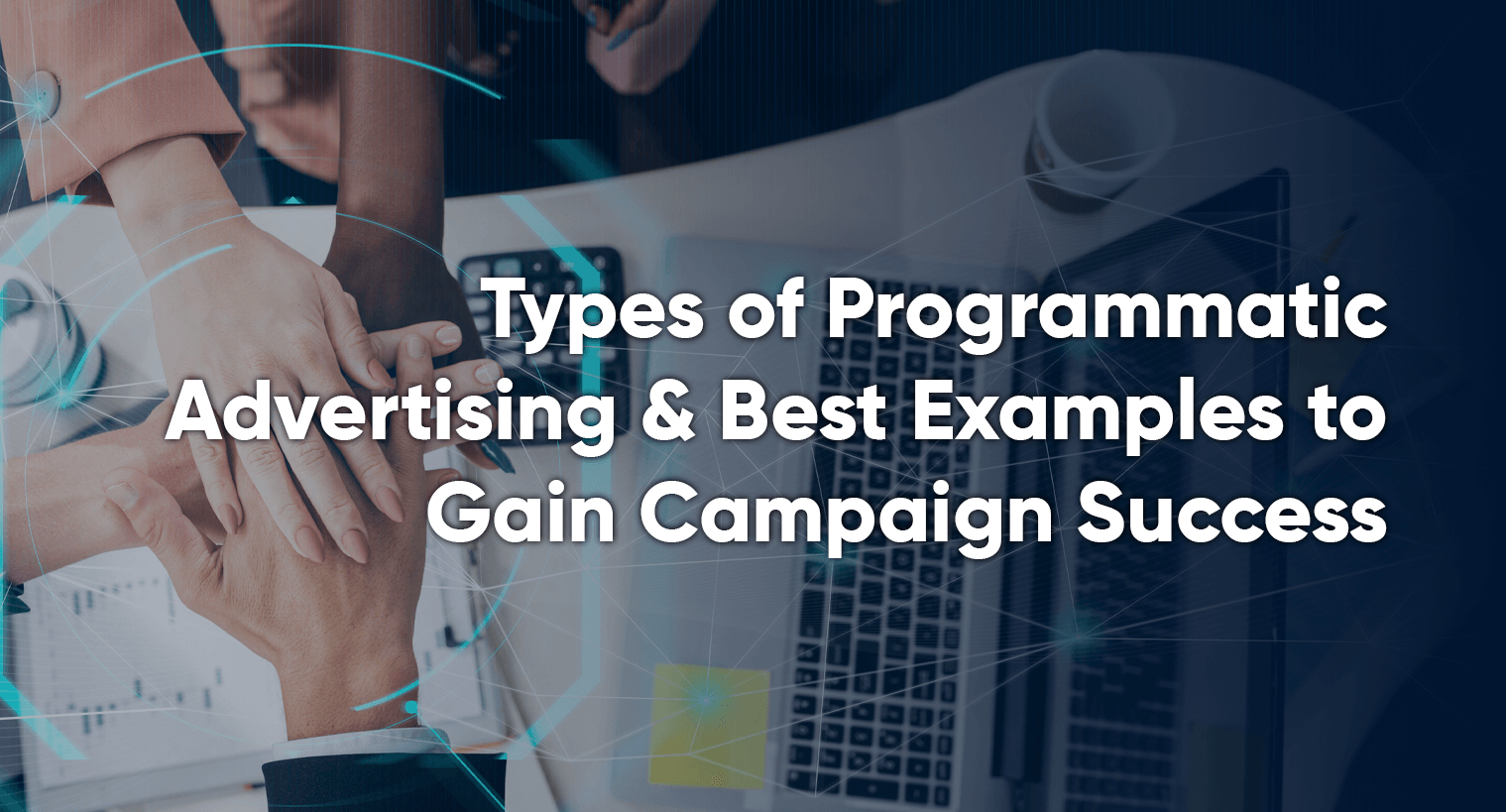
Programmatically sold advertising will reach 725 billion US dollars worldwide by 2026 (source: Statista). Programmatic advertising is at all times due to its flexible nature and increased ad effectiveness. In addition to this, there has been a rapid rise in connected TV advertising, due to which programmatic advertising has been firmly established as one of the most powerful tools in digital marketing. So, how does programmatic advertising work, and how you can leverage it to garner success for your campaigns?

Types of Programmatic Advertising
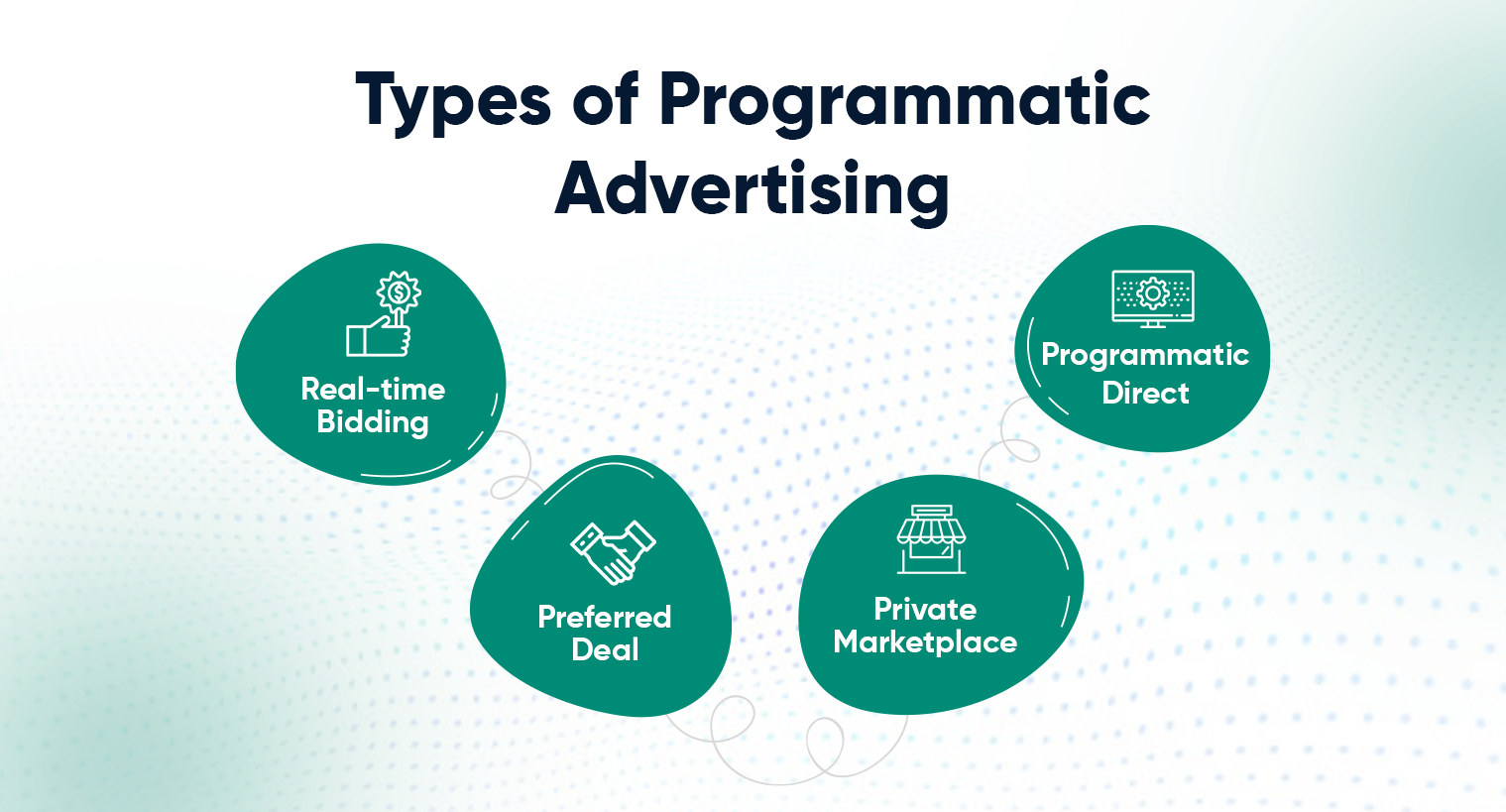
Here are some of the main types of programmatic advertising which every marketer should be aware of:
Real-time Bidding (RTB)
Real-time bidding (RTB) is a subcategory of programmatic media buying. It is the practice of buying and selling ads in real-time on a per-impression base in an open auction. Here, advertisers and publishers come together, and the highest bid wins. It is advantageous for both. For advertisers, it helps them to target relevant inventory – thereby increasing ROI on their ad spend, whereas for Publishers – it allows them to collect data on bidders’ purchase patterns and set relevant prices for their premium placement accordingly.
These are some of the reasons why real-time bidding is the most popular type of programmatic advertising.
Preferred Deal
Preferred Deals programmatic advertising allows publishers to sell a part of their inventory to advertisers at a negotiated fixed price. In other words, a preferred deal happens when publishers sell their premium inventory in a one-on-one programmatic auction at a set CPM (cost-per-mille) price to a selected group of advertisers only.
This type of deal is preferable as it is more transparent between buyers and sellers – publishers are able to view the inventory before the ads run, and thus can control the quality of the content while advertisers can overlook and take charge of inventory pricing.
Private Marketplace (PMP)
A private marketplace (PMP) programmatic advertising refers to a digital marketplace where advertising is bought and sold between exclusive parties.
PMPs is more preferable to those advertisers who want access to premium inventories before they become available to the open marketplace. It offers a much closer relationship with publishers than with RTBs.
Programmatic Direct
Programmatic Direct automates the negotiation and sales of your direct-sold inventory. It allows you to negotiate with both Programmatic Guaranteed (guaranteed, reserved inventory) and Preferred Deal (non-guaranteed, unreserved inventory) campaigns in Ad Manager. This means that media inventory is sold at a negotiable price, usually CPM-based to advertisers for a set period of time.
It is particularly useful for companies focusing on premium placements and brand safety. This is due to its nature of exclusivity and specificity of programmatic direct media buying. However, it is important to note that advertisers must have a big budget to use this kind of method.
How to Create a Successful Programmatic Ad Campaign?
Each company has its rules, is unique, and can’t utilize a “one size fits all” kind of approach. These are some of the key components of successful programmatic ad campaigns you can take a look at:
Step 1: Creative Ads
What’s the point of any programmatic ad campaign, or even any ad campaign? The answer is very simple. Think hard…It’s to attract attention. And what better way to do that than with a creative ad? Research suggests that only 16% of advertising is both recalled and correctly attributed to the brand, emphasizing that 84% of ad spending could be going to waste… ouch.
In addition, a recent study revealed that internet users are now spending an average of 2 hours and 22 minutes per day on social networking and messaging platforms. Brands have around 5 seconds of that time to grab visitors’ attention.
A British market research company Millward Brown revealed that the ten biggest reasons why ads are widely shared are that they are creative and engaging. Whether be it a catchy slogan, colors that pop, or a unique picture that could make a user look at it twice. Unique and creative ads are key to reaching the audience, and hopefully, converting them.
It may seem obvious, however, don’t rush through the creative process when you are setting up a programmatic campaign.
Step 2: Campaign Budget
Fun Fact: optimization starts even before the campaign goes live. Budgeting of a programmatic ad campaign can be approached in one or two ways:
- Define what you have to accomplish then determine how much that will cost, or
- You can go another way by preparing a layout of a budget and then determine the best use of that spend on the basis of what you’re trying to accomplish.
Other factors than can determine campaign pricing are:
- Private marketplace deals with a specific publication
- Premium inventory
- Third-party verification such as brand safety and fraud protection
Step 3: Measurable Goals
A programmatic strategy may vary depending on the goal and key performance indicator (KPI). Thus, before planning a programmatic campaign, it’s critical to set a goal(s) and KPI(s). Once at least one goal and KPI are decided upon, you’ll be better positioned to plan the campaign and determine its success once it’s live.
Some KPIs you may want to track include CPC (cost-per-click, or the total cost divided by total clicks), cost per action (CPA), CPA (cost per acquisition), and Return on Ad Spend.
Examples of Successful Programmatic Ad Campaign – Case studies
Here are some of the successful programmatic ad campaigns:
Programmatic advertising campaign 1
A leading sports entertainment app, has over 500 thousand downloads. It provides live updates, the latest news, scores, etc. The developers’ goal was to:
- Maximize Revenue by capitalizing on Unsold Ad Inventory.
- Ensuring High User Satisfaction. This was a priority while framing a new monetization strategy.
- Maximize revenue contribution of non-paying users.
- Implement alternative ad formats to improve the app’s fill rates.
The problem of unsold inventory was resolved by implementing: Universal Auction Technology, Competitive Demand Sources, and a Full-screen interstitial video ad format.
With this, the developers were then able to alleviate losses from the traditional waterfall model and increase eCPM, add an inflow of higher ad revenues through the new premium demand sources, Efficiently manage user satisfaction levels by delivering a viewable / non-obstructive experience, effectively pull advertisers to place video ads inline with content.
This proved to be a successful programmatic ad campaign and the results are worth looking at.
- 2x increase in ad revenue
- 3x higher fill rates
- 3x improved eCPM
Programmatic advertising campaign 2
A mobile app, using technology to match people with tasks, allowing users to watch videos, try products & services, and in turn reward the users on successful completion of these micro-tasks and gigs. The developers were looking to monetize the app by integrating ad formats which could improve their fill rates, standing at 43%.
To optimize user engagement, the developers decided to try the following ad formats:
- Full-Screen Interstitial Ads: Could be integrated seamlessly in the App’s interface and offered a smooth experience to players.
- Rewarded Video Ads: Users watch a video and earn cryptocurrency. The more they watch the more they earn, these earnings can be transferred to personal eWallets.
The campaign was an astounding success:
- 35x revenue increase
- 2x higher fill rates
Trends in Programmatic Advertising
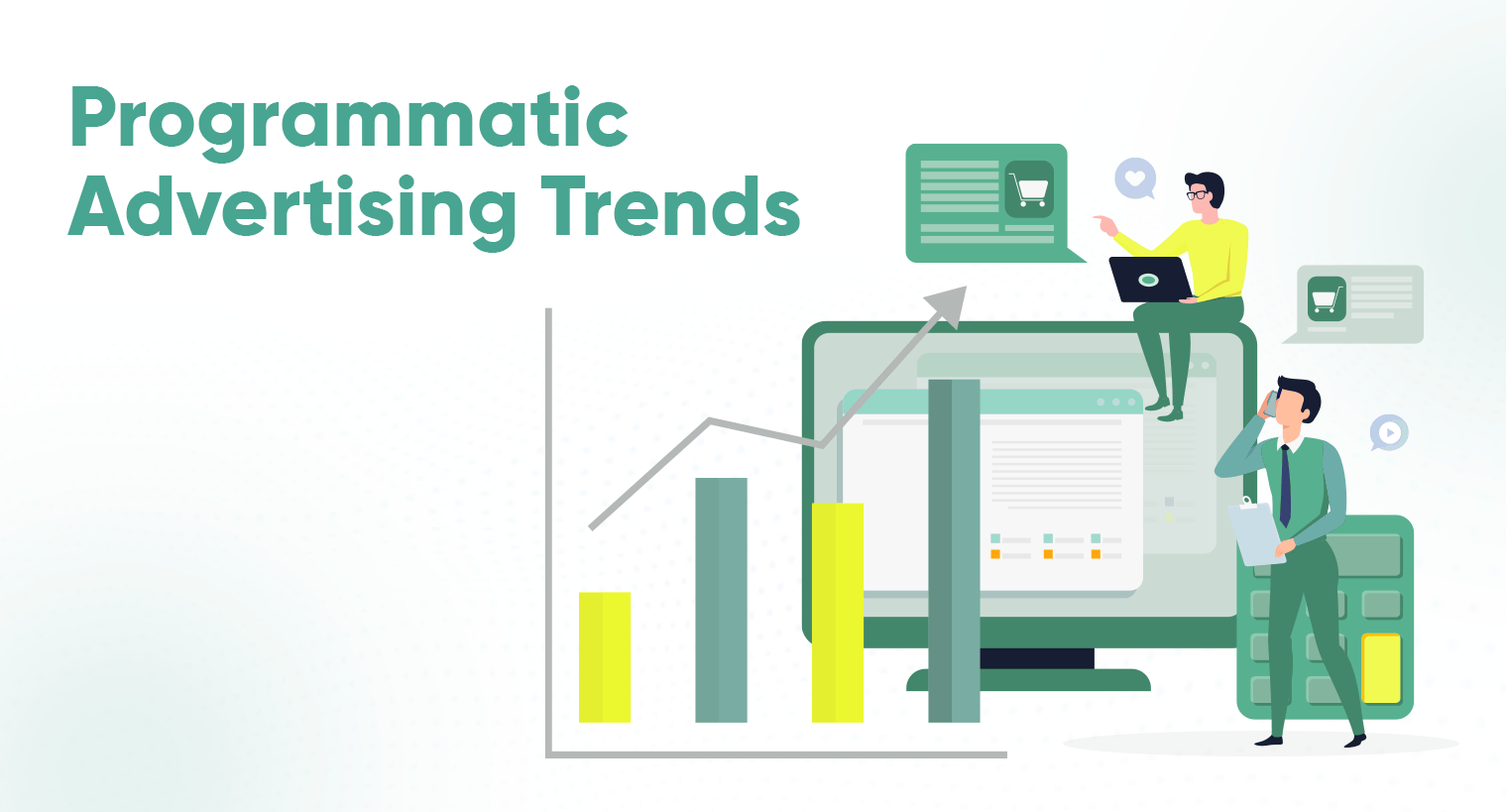
In-House Programmatic Ad Campaigns
According to the Interactive Advertising Bureau (IAB), more than 69% of marketers have brought their programmatic ad campaigns in-house.
In-house programmatic campaigns are useful are they increase cost efficiency, resource efficiency, and transparency. A combination of all these leads to a higher return on ad spend (ROAS).
First-Party Data & Moving Away from Cookies
As marketers will soon lose the ability to track consumers as third-party cookie data is no longer available by the end of 2023, they need to find a new, reliable workaround for the programmatic advertising process.
This is where first-party data creates its magic – by offering tremendous value to both advertisers and publishers by providing consumer interests and preferences to help discover the most effective ad messaging.
Growth in Connected TV (CTV)
At the current pace, CTV programmatic ad spending is expected to grow from 6.93 billion U.S. dollars in 2021 to 8.88 billion U.S. dollars by the end of 2026. [Statista]
Advertising on CTVs is a growing trend that cannot be ignored by advertisers. CTV is combining the ease of online advertising and the reach of TV. Serving tailored, skippable ads can be served to the target audience while they are streaming video content on their TVs.
Such drastic growth in investment coupled with a rapid increase in streaming service customers makes CTV one of the most valuable programmatic advertising trends.
Advancement in Digital Out of Home (DOOH) Ads
With the pandemic over, consumers are getting back to their daily routine and more digital screens are popping up all over the country.
This allows programmatic advertising to take a huge DOOH market share.
There are various benefits to this type of advertising such as broad reach, resistance to ad blockers, and unobtrusive placements.
Increase in White Label Software
A white-label software has been built and marketed as a service to businesses.
For many companies around the globe seeking programmatic control over their campaigns, white-label software as a service (SaaS) is an affordable starting point to bring their campaigns in-house.
Programmatic Audio
Programmatic audio uses technology to automate the selling and insertion of ads in audio content such as podcasts, digital radio, and music-streaming services.
There are a number of big players who have already implemented programmatic audio. Since audio ads do not rely on visual engagement, thus cannot be skipped or blocked – allowing brands to reach consumers immediately with higher exposure.
Video Advertising Campaigns
Digital and online video still remain to be a popular choices of media type for high-impact display ads. Automated video ad buying has now become the standard for distributing video ad commercials in the US.
Mobile Gaming
According to reports by Statista, mobile gamers will rise sharply from 1.8 billion to more than 2.3 billion by 2026 – giving access to brands for a very lucrative agency to target via programmatic ads.
With games, ads can be integrated directly into the game by allowing users to win prizes by watching ads or by adding ads at the bottom of a screen, very much similar to traditional banner ads.
Contextual Advertising
The demise of cookies has brought forward contextual advertising to the forefront of programmatic advertising.
By leveraging contextual intelligence technology, marketers can ensure that their ads not only appear in relevant content but that it also reaches the relevant audience. This inspires action in consumers and pushes them to drive better results.
Silverpush’s Chocolate Programmatic Ads

BLOGS
Super Bowl Advertising: A Month-Long, Multi-Screen Event for Brands
For Americans, there are two events that they hyped for a whole year - Football season, and waiting for football season. Football remains highly popular among Americans, with searches for "NFL Draft" and viewership numbers showing an unwavering interest in the sport. According to Google Search data, football is more ...

BLOGS
Advertising in the Age of Climate Change: The Adoption of Carbon Emission Metrics
The urgency of the climate crisis is increasing, and the media industry is no exception. While some professionals are working to reduce their direct operational emissions, there is an urgent need for common standards to be set for indirect emissions that come from digital advertising. The digital advertising industry is becoming ...

BLOGS
Complete Guide to Reaching Audience with Cookieless Advertising
What’s your alternative game plan for effective cookieless advertising? Haven't thought about it yet? The time is now! Introduction The complete year of 2022 was dedicated to cookies! Panic is setting in amongst marketers owing to mounting privacy laws and the ban on cookies, causing them to re-evaluate their strategies.




